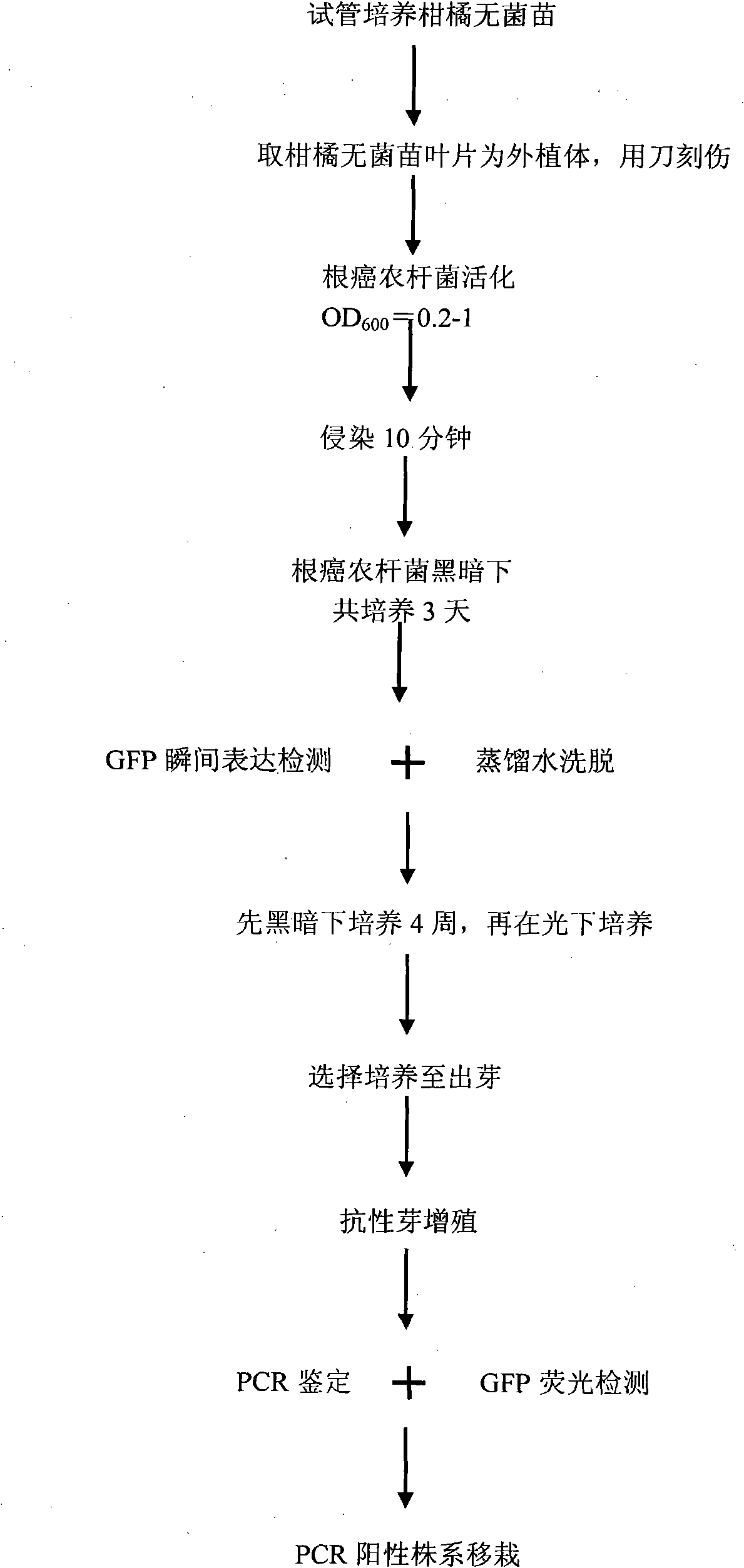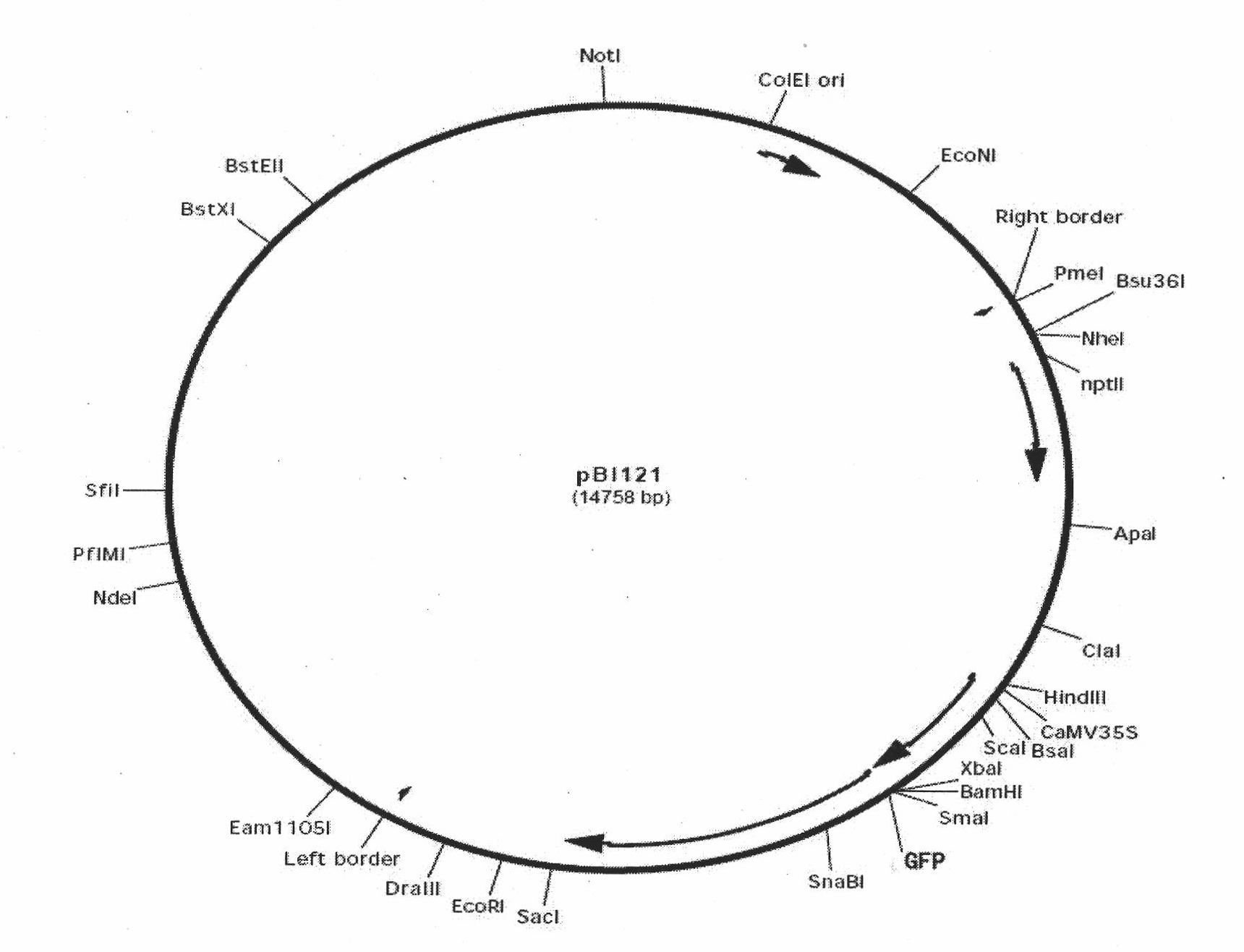Method for transforming and cultivating citrus transgenic plant by agrobacterium-mediated blade
An Agrobacterium-mediated, transgenic technology, applied in the fields of botanical equipment and methods, biochemical equipment and methods, horticultural methods, etc.
- Summary
- Abstract
- Description
- Claims
- Application Information
AI Technical Summary
Problems solved by technology
Method used
Image
Examples
Embodiment 1
[0043] 1) Preparation of explants
[0044] After the seeds of the citrus variety Fulingxia orange (a common cultivated sweet orange variety that matures in summer, from the orchard of the Citrus Research Institute of Huazhong Agricultural University) were taken out from the fruit, they were first treated with 1M sodium hydroxide solution for 20 minutes, and washed with sterile water for 3 minutes. Once again, it is 2.5% sodium hypochlorite solution to sterilize for 5-20 minutes with available chlorine, and the citrus seeds after disinfection are sown on MT (Murashige T and Tucker DPH.Growth factor requirements of Citrus tissue culture.Proc.First Intl.Citrus Symp, 1969, 3:1155-1161) on medium (pH5.8), under light (45μmol m -2 the s -1 Light intensity, light time 16h per day) cultivated for 4-12 weeks to obtain sterile seedlings.
[0045] 2) Preparation of Agrobacterium liquid
[0046] Before transformation, take a small tube of Agrobacterium bacterial liquid and scrape the c...
Embodiment 2
[0065] Example 2: Transformation of citrus leaves to obtain transgenic plants
[0066] 1. Transformation receptor material and culture method
[0067] Fulingxia sweet orange fruits were collected at the National Citrus Breeding Center of Huazhong Agricultural University, Wuhan City, Hubei Province, China. After the seeds were removed from the fruit, they were treated with 1 M sodium hydroxide for 20 min, washed 3 times with sterile water, and then treated with 2.5% available chlorine Sodium hypochlorite solution was sterilized for 5-20 minutes, washed 2-3 times with sterile water, and seeded in MT (Murashige T, Tucker D P H.Growth factor requirements of Citrus tissue culture.Proc. First Intl. Citrus Symp, 1969, 3: 1155-1161) medium (pH 5.8), cultured under light for 4-12 weeks to obtain sterile seedlings.
[0068] Unless otherwise specified, the medium components of the present invention are shown in Table 1.
[0069] The culture medium was sterilized by conventional methods...
PUM
 Login to View More
Login to View More Abstract
Description
Claims
Application Information
 Login to View More
Login to View More - R&D
- Intellectual Property
- Life Sciences
- Materials
- Tech Scout
- Unparalleled Data Quality
- Higher Quality Content
- 60% Fewer Hallucinations
Browse by: Latest US Patents, China's latest patents, Technical Efficacy Thesaurus, Application Domain, Technology Topic, Popular Technical Reports.
© 2025 PatSnap. All rights reserved.Legal|Privacy policy|Modern Slavery Act Transparency Statement|Sitemap|About US| Contact US: help@patsnap.com



